Autel EVO Lite+ Review: This Drone Deserves Some Respect
![]()
Autel Robotics’ new EVO Lite+ drone combines a 1-inch 20-megapixel sensor with a variable aperture to shoot detailed, rich images. The company might not be a household name like DJI, but the EVO Lite+ deserves your attention.
Design
The drone comes in in three colors — orange, white, and gray — with white only available in the Standard package and gray only available in the Premium package.
I took a look at the Premium bundle for this review, which has five extra pairs of propellers, three flight batteries, a battery charging hub, four strengths of ND filters, and a shoulder bag in addition to the essentials for operating the drone. In comparison, the Standard package comes with three extra propeller pairs, a single flight battery, no battery charging hub (just the single battery charger), and no carrying bag.
![]()
![]()
Ready to fly with a battery and four propellers attached, the EVO Lite+ weighs one pound 14.5 ounces (866 grams). This is a little more than half a pound heavier than the DJI Air 2S and the heft does not go unnoticed. Its footprint for storing away in a bag also compares more to a Mavic 3 than it does a DJI Air. It measures 8.3 inches (21.1 centimeters) in length and is about 4.5 inches (11.4 centimeters) wide and 3.5 inches (8.9 centimeters) tall. Overall, it’s bigger and heavier than I would suspect based on its “Lite” branding.
The four foldable propeller arms are made from carbon fiber and feel rigid and tough. After flying with the drone for the past couple of months and folding in and out the arms for storage, none of them have developed any wobble at the connection point. Thoughtfully, the propellers connect and disconnect from the arms with a simple push and twist, and no tools are required to keep on hand.
![]()
Controller
The controller for the EVO Lite+ is fairly robust and weighs 14.6 ounces (413 grams). I like the feel of the tightly knurled rubber used in the grip areas and overall there’s a good tactile experience with the knobs and buttons.
At the top of the controller is the spring-loaded smartphone clamp which does the job well enough and also houses the antennas, but it doesn’t go above and beyond. First, it’s bulky and doesn’t collapse down into a smaller shape. There’s also nowhere on the controller to store the smartphone connection cord elegantly, and if you leave it in the top slot, it gets pinched from the smartphone cradle when it closes down.
![]()
![]()
The controller is a typical two joystick setup for moving the aircraft around plus a gimbal pitch dial on the top left that controls the angle of the camera.
The joysticks are removable, but there is nowhere on the controller to store them for safekeeping if you were to take them off. Additional controls include the power button, a fly-to-home button, a pause button, one programmable function button, and the shutter button for taking photos and recording video.
The single function button is a nice addition to add at least a little bit of customization to the controller, but the options of what it can do are limited. A single press can change the drone’s speed mode, lock the auto exposure, set the gimbal pitch to 90 degrees, or toggle the map and camera views. A double-press of the button can be set to a different previously listed function.
At the bottom is one USB-C port for charging the controller and one empty port that I surmise is a place to store an end of the smartphone cord if it’s Lightning or Micro-USB and not USB-C, but again it’s not an elegant solution to tuck it out of the way.
The battery life of the controller is really good, and depending on how often you fly you could probably go a week or longer without charging it. I found myself topping it off at my leisure every now and again, but never because I had ever fully drained it.
![]()
Ease of Use
Getting the drone set up for flying and pairing it with the Autel Sky app is straightforward. Once in the air, the drone is stable and maintains its composure quite well even in stronger winds. There are sensors placed in the front, bottom, and rear, but not on the top. Throughout testing, I’d find that the sensors work so well to the point where I would often want to be in “Ludicrous” mode just to disable them from a lot of over-correction, and when it came to landing I almost always had to disable the sensors to get it situated in the right spot to come down.
Using the Autel Sky app is a bit of a mess, but I guess there’s only so much that can be done to display all the different modes and settings cleanly without getting rid of them and simplifying. With that in mind, it would be nice to select and toggle off the camera modes that I don’t use, especially because the app makes me tap through them one at a time just to get to the one I want. This is particularly annoying when I’m shooting photos or videos in an automatic mode and want to switch to “Pro” mode with manual camera adjustments, but it’s in an entirely different place in the app and requires a lot of tapping to get there.
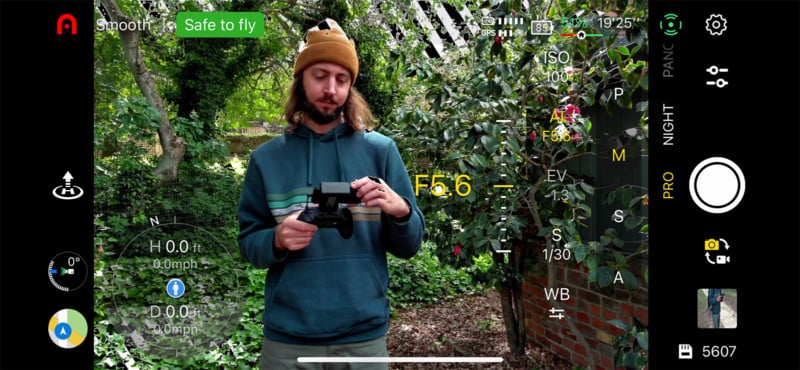
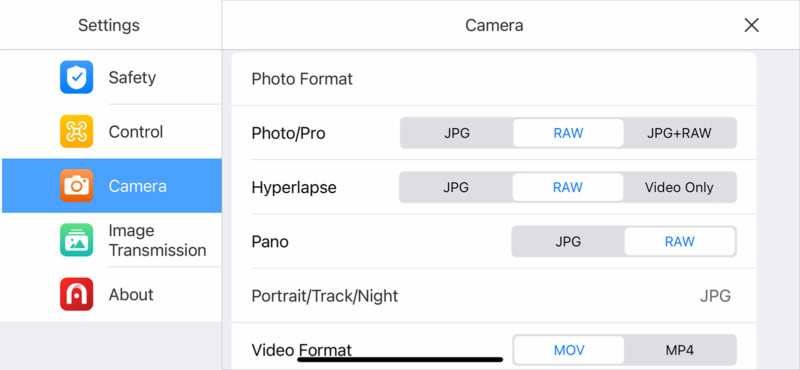
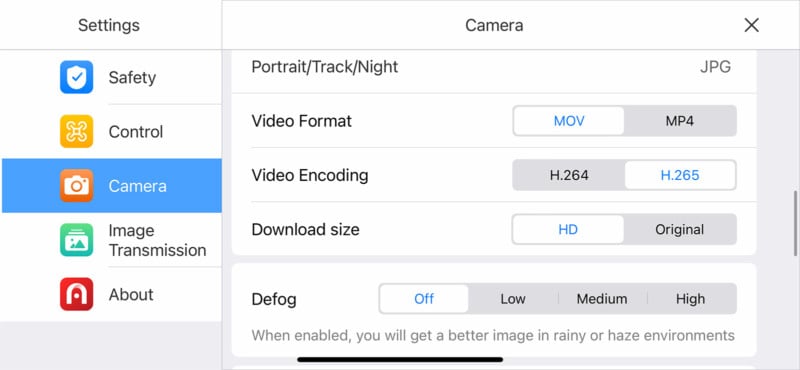
One of the more bizarre design choices is that the Pro mode cannot shoot in log gamma for video, but the auto-exposure video mode can. Likewise for photos, where Pro photo mode can’t choose between single frame, burst shooting, shutter timer delay, and exposure bracketing, but the auto-exposure photo mode can. This is backwards from what makes sense, of course, and at this point they should be options in both modes.
There are also some hidden gestures built into the app that shouldn’t be. For example, swiping up removes all the overlay information. Do you know how many times I had to suddenly fly without flight data in midair before figuring this one out? Many of the settings are controlled by swiping up and down and have small touch targets, so I’m constantly hiding the information by accident.
Another thing to be aware of when using the app is that it seems that firmware updates wipe out set user preferences such as shooting RAW instead of JPEG, so you have to remember to go back and make those adjustments every time you update the drone.
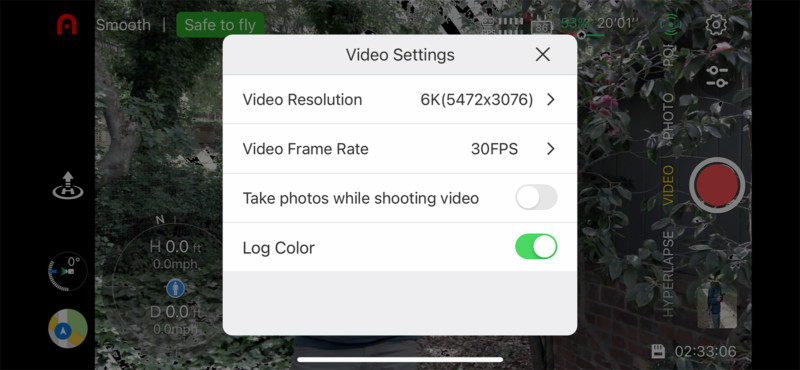
Image Quality
Equipped with a 1-inch, 20-megapixel sensor, the EVO Lite+ has a competitively-sized imager for a prosumer drone in 2022 and has a typical ISO range of 100 to 6,400. In Night Scene mode this can be expanded up to ISO 64,000. The 29mm equivalent lens sits on a three-axis gimbal and has a variable aperture range of f/2.8 to f/11 and can shoot with a shutter speed up to 1/8,000 second. The camera uses contrast-detect autofocus or manual focus and can focus as close as 1.6 feet (0.5 meters).
Image files can be recorded as either 8-bit JPEGs or 10-bit DNGs, and Autel claims to be bringing 12-bit in a future firmware update. To my surprise, the JPEGs coming off the camera don’t look half bad and aren’t plagued by heavy oversharpening or wonky saturation. As good as the JPEGs look, the real photo magic comes from the RAW DNGs, and these look really good. Below is a sample of testing the dynamic range through highlight and shadow recovery from a RAW file.
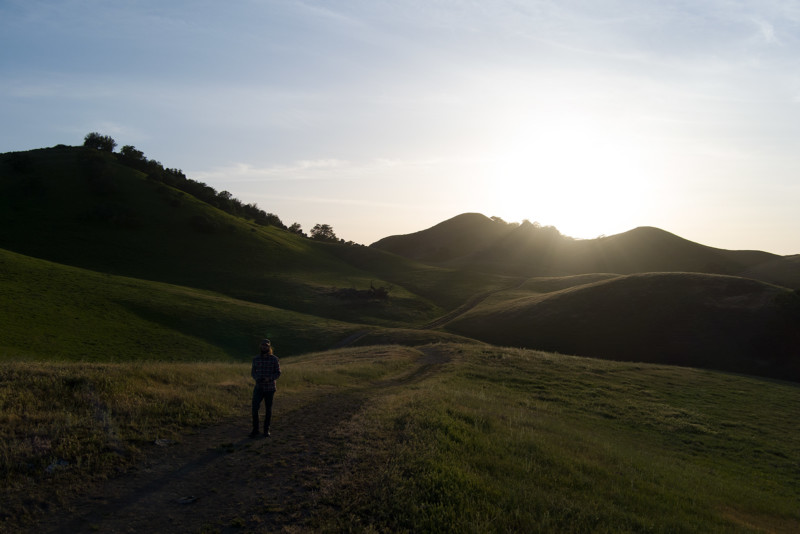

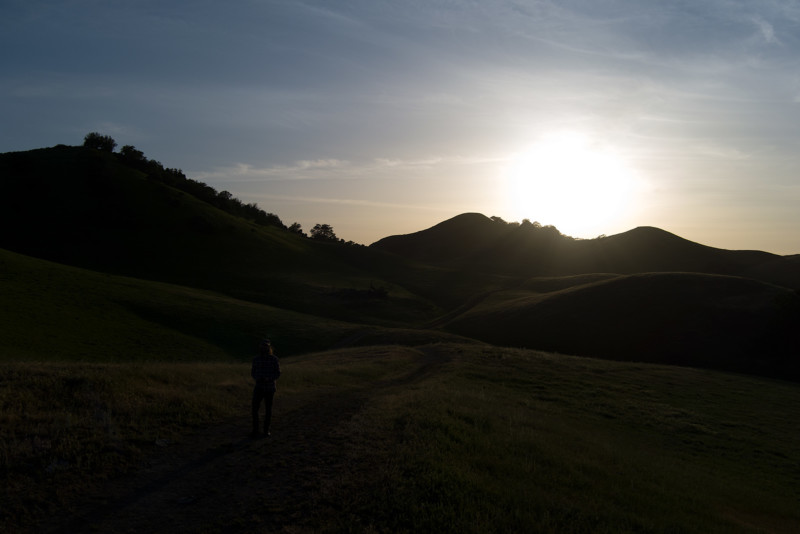
To test sharpness, I shot the series of photos below at different apertures with the camera pointed straight down. At the center, photos were nicely sharp with a wide-open aperture of f/2.8. At f/4, there’s a noticeable improvement. By f/5.6, the images were as sharp as they can get, but it can be hard to tell the difference from f/4 if you’re not looking super closely. Moving into f/8 and beyond, there is a hit to sharpness and stopped all the way down to f/11 the photos are soft in comparison, but I wouldn’t say entirely unusable.
Looking at the bottom right corner to peep sharpness here, I was impressed. Autel could have been hiding lens corrections in the processed JPEG files, but seeing the corners of RAW files shows that the lens is actually just that good. There is no radical drop-off of sharpness or smeary, heavy distortion at the corners.
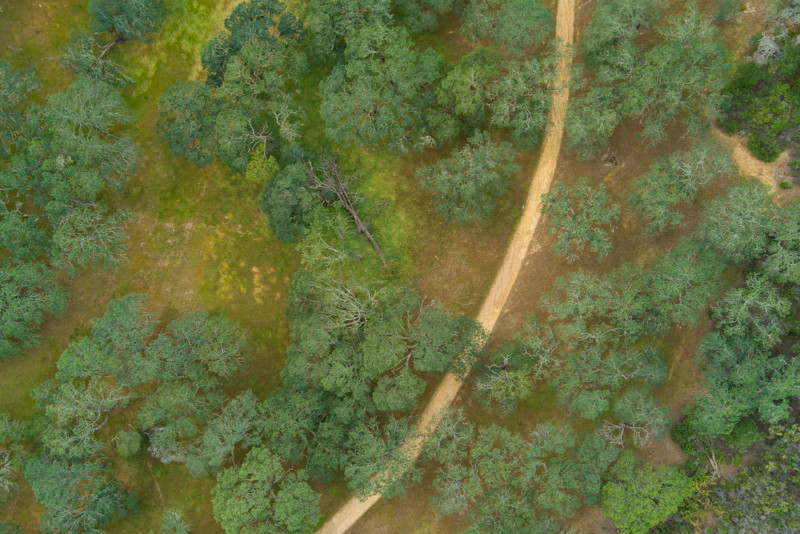
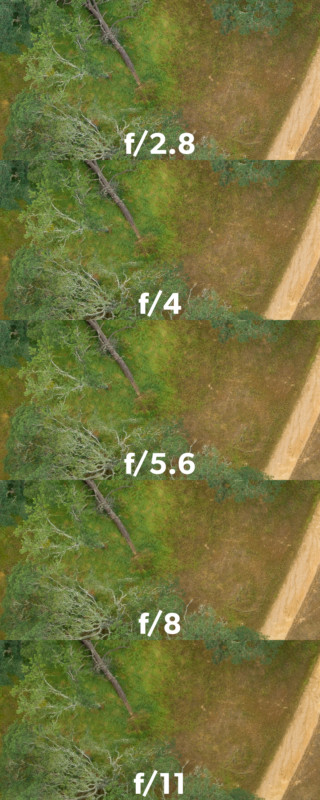
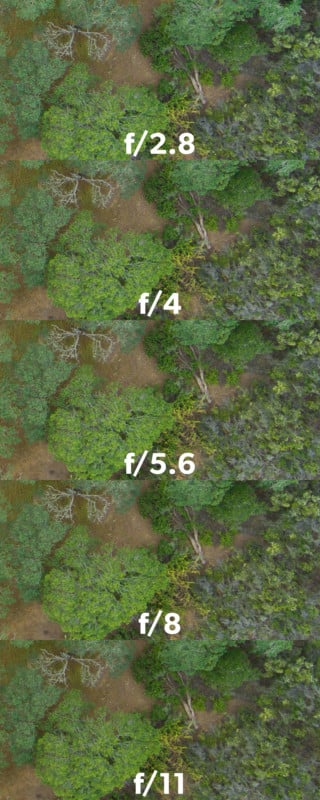
To further test the sensor, I checked out how well it handles noise throughout the ISO range. Below is a series of RAW photos taken from ISO 100 through ISO 6,400 to compare the results. I kept the Adobe Camera RAW settings at their default, which is no noise reduction applied and +25 color noise reduction applied. To my eyes, the photos hold together nicely up to ISO 800, while at ISO 1,600 and beyond it descends into a loss of image quality and color fidelity.
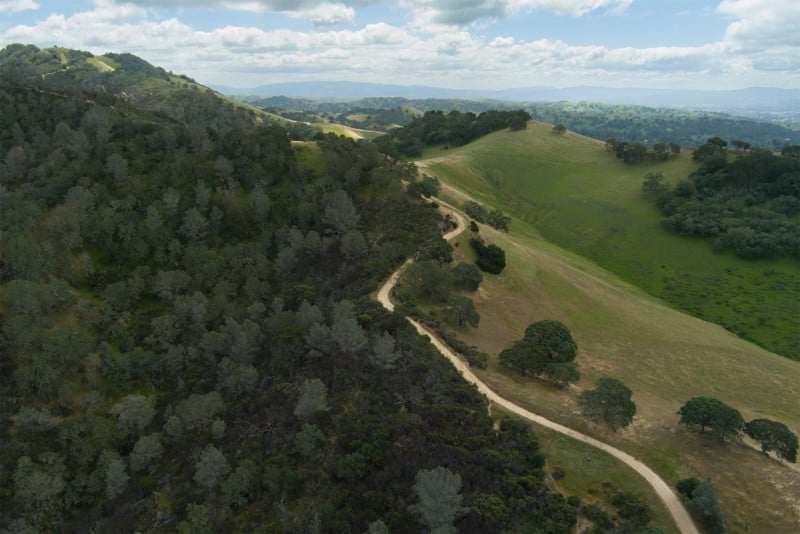
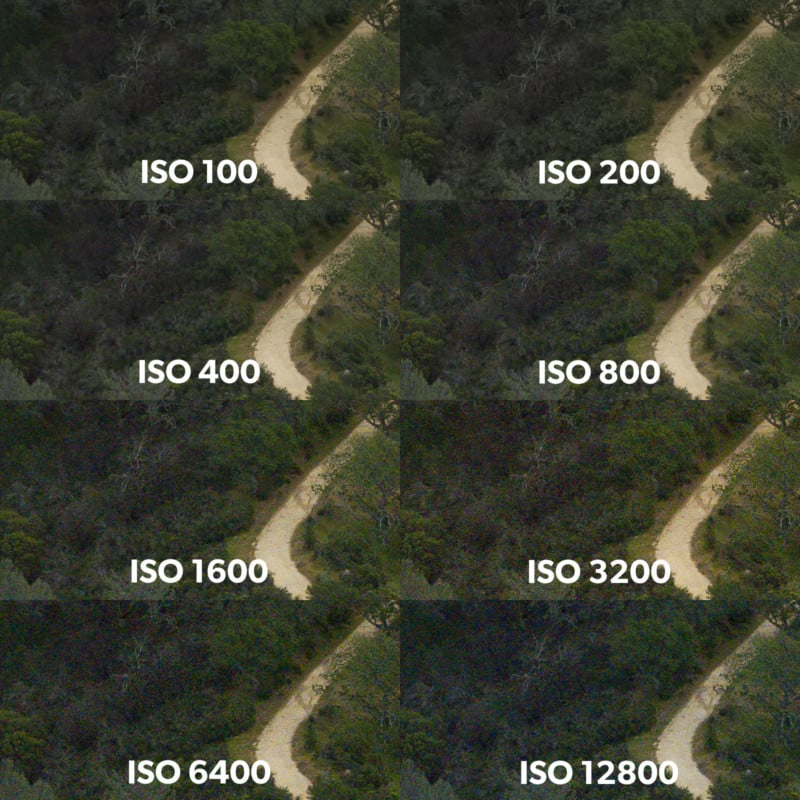
One problem that did crop up is how the lens handled ghosting and flaring when shooting toward the sun when it was lower in the sky. As seen in the video below, it can be quite an intense effect that overpowers the recorded images and videos. For the most part, I didn’t see such a strong impact, but it can happen when the shooting angles and sun direction align under circumstances.
As we’re probably most familiar with on our smartphones, the EVO Lite+ also has a Portrait mode which digitally blurs backgrounds around a subject. The result of using this feature can be hit and miss.
There is no sort of depth map that is being made to help create more realistic results, and that means everything that’s not the subject will get the same amount of blur regardless of where on a focal plane it falls. Sometimes the setting will completely blur my head as if it were part of the background and I can count on it to always miss applying a blur to the background between my legs. Even though it has its issues, it’s not a total miss and the results can sometimes be pleasing, especially for a quick social media post.

Video Quality
The EVO Lite+ can record up to 6K resolution at 30 frames per second, 4K up to 60 frames per second, and 1080p up to 120 frames per second. It’s capped at 8-bit recording, even when using the log color gamma. Overall impressions of the video quality are that the 1-inch sensor is certainly putting in work and makes the most out of its more limited color space. Scenes are usually rich in color and have good detail, although the processing can result in artificially oversharpened areas. Automatic exposure is quick to blow out highlights if I’m not careful, so making use of the AE-hold function or Pro video settings is helpful to get used to.
For slow-motion recording, I saw little to no quality loss when shooting in 4K at 60 frames per second. On the other hand, shooting in 1080p at 120 frames per second gives the most impact for slow-motion effects, but the image quality is so degraded it’s virtually unusable.
There are four types of pre-programmed cinematic “quick shots” in the app. These include Rocket, Orbit, Flick, and Fade Away. Below is an example of Fade Away in action. It’s a little bit jittery in places and I’d need to cut around or stabilize the issues in a final edit.
Track Mode
There are two ways to use tracking with the EVO Lite+. One mode makes the drone act as a video camera on a fluid head tripod. It will stay stationary at the same location, but track and follow the subject anywhere it goes by panning and tilting the drone and gimbal camera as shown in the video below. When it loses track of me walking, you can see it stutter and jump around, but when the tracking is good it’s a smooth experience and doesn’t have very many jitters.
The other tracking mode can follow a person as they move along. The drone will still use its sensors to move around objects and avoid collisions as seen in the second half of the video below where I was walking on a trail under trees. It literally does prefer to follow the subject, and if you instead walk towards the drone it will insist on flying around you to get to the backside.
Autel tells me that this follow tracking feature will be updated in a future firmware release so that any object can be tracked, not just humans.
A Drone That’s Worth Consideration
The Autel EVO Lite+ is a safe, competent flyer with good image quality and impressive sharpness from the center to the corners. The variable aperture allows me to stop down to achieve optimum sharpness in my photos, and it’s also a big help for video shooting to maintain a lower shutter speed while keeping correct exposure.
My wishlist of improvements to the EVO Lite+ would be a better controller design that packs away more neatly, 10-bit video with the ability to use log gamma in Pro mode, Autel Sky app improvements to join and clean up all the scattered options, smoothing out the rough areas while tracking, and perhaps adding a corrective element to the lens design to better control ghosting and flaring.
![]()
![]()
I’d be remiss to not mention somewhere that I’ve been flying this drone for the past two months. What was once meant to be a two-week review became extended as Autel kept dropping substantial firmware updates that would quickly date my experiences and opinions. I want to credit Autel with continually adding brand new features and improving the EVO Lite+ at such a rapid pace, even if it made reviewing the drone more difficult.
![]()
![]()
Are There Alternatives?
This drone is most appropriately compared to the DJI Air 2S. The Air 2S was released in early 2021 and features a spec-matching 20-megapixel 1-inch sensor and the ability to record 5K 30p and 4K 60p.
However, the Air 2S is also about 10 ounces lighter, has an upward obstacle sensor, can record video in 10-bit D-log with a higher maximum bitrate, and because of the huge price difference in DJI’s favor — $1,000 versus $1,550 for standard packages — one can afford to step up to the Fly More Combo kit for $1,300 and still pay less than what it would take to pick up Autel’s drone.
The EVO Lite+ does have some solid advantages in a couple of areas such as its variable aperture which allows much more freedom mid-flight to change exposure settings rather than deal with landing and switching out neutral density filters. Plus, the flight time for the Autel is about 8 minutes better than what DJI promises. I also personally prefer its tighter field of view which is the 35mm equivalent of 29mm versus the Air 2S’s 22mm.
![]()
![]()
Should You Buy It?
Yes. For those that appreciate straight-out-of-camera results, the Autel EVO Lite+ stands up to scrutiny.